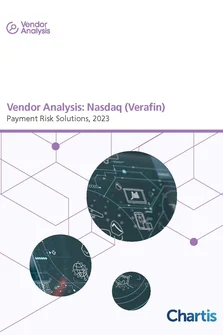<p>This report provides an independent evaluation and description of Oracle’s leading practices and competitive position. Our analysis is based on information in the Chartis report <em>IFRS 9 Technology Solutions: Market Update 2017</em>, and our corresponding FinTech Quadrant™.</p>
<p>The report also includes brief coverage of:</p>
<ul>
<li>The main demand-side trends in this market, with an analysis of the key business and regulatory challenges.</li>
<li>The supply-side dynamics, with a focus on the vendor landscape.</li>
</ul>
<p>Like other regulatory mandates of the past decade, International Financial Reporting Standard 9 (IFRS 9) is another transformational event for all financial institutions (FIs). In all likelihood, it will reduce FIs’ profits and retained earnings, increase their loan loss provisions, and have a negative impact on their regulatory and economic capital. To mitigate these impacts, FIs will have to rely heavily on the rigor of their data management and the quality of their data, and on the application of Expected Credit Loss (ECL) modeling and overall governance.</p>
<p>Implementing an IFRS 9 system is set to be more challenging than FIs had originally anticipated. IFRS 9’s impairment regime is proving to be the most problematic area: FIs are realizing that they will not be able to re-use their Basel implementations to the extent they had hoped.</p>
<p>The standard has three broad components that will affect FIs in varying ways:</p>
<ul>
<li>Classification and analytics.</li>
<li>ECL impairment.</li>
<li>Hedge accounting.</li>
</ul>
<p>As a result, FIs will face a variety of challenges around impairment, rollout and model governance, including:</p>
<ul>
<li>How to deal with gaps in data.</li>
<li>Problems with reconciling operations.</li>
<li>Managing the tension between the risk and finance departments.</li>
<li>Choosing the right model for the appropriate level of portfolio granularity.</li>
<li>A fragmented landscape of vendor solutions.</li>
</ul>
<p>Many FIs aspire to re-use parts of their IFRS 9 systems for other reporting and analytical regulatory requirements, to establish an overall strategic finance, risk management and regulatory systems platform. For most, though, this is a long way off; nevertheless it still provides a useful sales tool for some vendors and consultancies.</p>
<p>Ultimately, IFRS 9 rollouts have worked well when carried out with preparation and conviction. FIs with the right level of internal support, impact analyses and escalation processes have solved several problems at once and eased their budgetary pressures. And strategic IFRS 9 projects – rather than those used just for financial reporting – are starting to promise good payback.</p>
Only users who have a paid subscription or are part of a corporate subscription are able to print or copy content.
To access these options, along with all other subscription benefits, please contact info@risk.net or view our subscription options here: http://subscriptions.risk.net/subscribe
You are currently unable to print this content. Please contact info@chartis-research.com to find out more.
You are currently unable to copy this content. Please contact info@chartis-research.com to find out more.
Copyright Infopro Digital Limited. All rights reserved.
As outlined in our terms and conditions, https://www.infopro-digital.com/terms-and-conditions/subscriptions/ (point 2.4), printing is limited to a single copy.
If you would like to purchase additional rights please email info@chartis-research.com
Copyright Infopro Digital Limited. All rights reserved.
You may share this content using our article tools. As outlined in our terms and conditions, https://www.infopro-digital.com/terms-and-conditions/subscriptions/ (clause 2.4), an Authorised User may only make one copy of the materials for their own personal use. You must also comply with the restrictions in clause 2.5.
If you would like to purchase additional rights please email info@chartis-research.com


